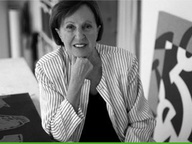Ann Veronica Janssens. Grand Bal

© 2023 Ann Veronica Janssens / SIAE | Ann Veronica Janssens, Untitled (Prism), 2013. Courtesy l’artista e Institut d’Art Contemporain, Villeurbanne/Rhône-Alpes I Ph. Blaise Adilon
Dal 5 April 2023 al 30 July 2023
Milano
Luogo: Pirelli HangarBicocca
Indirizzo: Via Chiese 2
Orari: da giovedì a domenica 10.30-20.30
Curatori: Roberta Tenconi
Costo del biglietto: ingresso gratuito
Telefono per informazioni: +39 02 6611 1573
E-Mail info: info@hangarbicocca.org
Sito ufficiale: http://pirellihangarbicocca.org
Pirelli HangarBicocca presenta dal 6 aprile (opening 5 aprile) al 30 luglio 2023 “Grand Bal”, la mostra retrospettiva dedicata ad Ann Veronica Janssens, artista belga tra le più rilevanti a livello internazionale. Nei suoi 40 anni di carriera Janssens ha sperimentato l’inafferrabile e forgiato la luce, la sua materia prediletta, indagando la natura sensoriale e performativa di spazi e architetture, dando vita a opere mutevoli e in divenire.
Gli interventi dell’artista sono l’esito di una ricerca al confine tra arte e scienza e indagano come veri e propri laboratori i limiti percettivi e psichici dell’essere umano.
“Grand Bal” è concepita come un’estesa coreografia che accosta installazioni ambientali a lavori più intimi, tracciando un percorso visivo, sonoro e tattile che invita a muoversi tra il l’incorporeo e il tangibile, tra atmosfere surreali e rimandi a contesti sociopolitici e culturali della nostra contemporaneità.
Dalla fine degli anni Settanta Ann Veronica Janssens (Folkestone, Regno Unito, 1956; vive e lavora a Bruxelles) ha sviluppato la sua ricerca intorno alla luce e alla sua relazione con l’ambiente circostante, realizzando spesso opere site-specific, che sfidano il carattere immutabile della scultura e dell’installazione. Spesso associata al lavoro dei “Light & Space” – il gruppo di artisti americani degli anni Sessanta come Robert Irwin e James Turrell –, Janssens ha strutturato la sua pratica sul superamento dell’oggetto artistico attraverso la sua smaterializzazione e decostruzione. Con forme e gesti minimali e dal carattere anti-monumentale, infatti, Janssens è in grado di modificare la percezione dello spazio da parte del pubblico. Le sue opere, grazie all’impiego della luce, del colore, di specchi, dell’aria o della nebbia artificiale, richiedono la partecipazione diretta dell’osservatore e appaiono un invito a esperire la realtà in modo differente attraverso una presa di coscienza dei propri sensi, dell’architettura e delle categorie spazio-temporali con cui la definiamo, mettendone in luce gli aspetti sociopolitici e culturali. Spesso basati su sperimentazioni in collaborazione con realtà scientifiche e tecnologiche, i lavori dell’artista diventano laboratori con cui testare i confini tra proprietà ed elementi fisico-materiali, considerati opposti: come la luce e l’oscurità, il suono e il silenzio, il vuoto e la presenza, il tangibile e l’incorporeo.
“Grand Bal”, a cura di Roberta Tenconi, esplora la carriera di Ann Veronica Janssens e diversi aspetti della sua pratica, presentando per la prima volta la più comprensiva selezione di opere, tra lavori storici e nuove produzioni, pensata per dialogare con lo spazio delle Navate di Pirelli HangarBicocca e l’area esterna, espandendone i confini. L’artista, infatti, ha concepito un intervento inedito, waves (2023), in cui trasforma alcune delle porte di uscita in aperture: sostituendo i battenti con una rete in PVC porosa e trasparente, permette alla luce naturale, così come a suoni, aria e altri elementi esterni, di penetrare nello spazio espositivo. Le alterazioni prodotte si inseriscono dinamicamente all’interno del percorso, che è stato ideato dall’artista come una coreografia visiva e sonora che mette al centro il visitatore (anziché gli oggetti), chiamato a muoversi e partecipare direttamente, seguendo l’alternarsi delle proprie sensazioni e percezioni generato dal confronto con le opere. Il titolo “Grand Bal” (grande ballo in francese) evoca proprio questa dimensione performativa e la dinamica relazione che si instaura tra lavori, architettura e corpo umano come in una danza in cui ogni elemento è necessario all’altro per rivelarsi completamente.
Questo legame appare evidente già dalla prima installazione che apre la mostra, Drops (1999/2023), presentata all’ingresso delle Navate. Dodici specchi circolari, disposti sul pavimento della Piazza, riflettono simili a gocce frammenti e dettagli della struttura architettonica dell’edificio, disorientando la percezione del luogo da parte dei visitatori e offrendo nuove prospettive visive dell’ambiente circostante. Gli elementi specchianti reagiscono in maniera sempre diversa alle condizioni in cui sono esposti, alterandole attraverso la rifrazione della luce. L’opera è una nuova versione di Danaé del 1999, realizzata in collaborazione con Nord project and Co nella Scuola Grande di San Rocco a Venezia, in cui gli specchi a terra interagivano e rimandavano l’immagine degli affreschi a soffitto di Tintoretto (1518-1594), creando multiple connessioni tra spazio, opere presenti, artisti e visitatori. Accanto alla storia dell’arte, per Ann Veronica Janssens anche quella dell’architettura riveste un ruolo fondamentale, come si evince dal video esposto in Pirelli HangarBicocca Oscar (2009), dedicato alla figura dell’architetto Oscar Niemeyer (1907-2012), maestro del modernismo brasiliano e radicale portavoce di ideali sociali.
Sono numerosi i lavori in cui l’artista si interroga sul significato di architettura, ridefinendo le caratteristiche di edifici e spazi pubblici. Una sezione delle Navate viene ad esempio, modificata dalla presenza di una vasta superficie percorribile composta da mattoni, uno spazio nello spazio che ospita anche altre opere, Area (1978-2023). Con questa installazione Janssens mette in discussione le canoniche definizioni di scultura e architettura, realizzando quello che lei stessa definisce un super space: “una estensione spaziale di un’architettura esistente... Sperimento spesso con le possibilità di rendere fluida la percezione della materia e dell’architettura, che io vedo come una sorta di ostacolo al movimento e alla scultura” (Ann Veronica Janssens, 2004). Sospese sopra i mattoni, delle altalenecostituiscono l’opera Swings (2000-2023). I visitatori sono invitati a utilizzare questi elementi, associati a una dimensione infantile e ludica e pensati per l’esterno, disorientando la fruizione della mostra. La loro dissonanza con il luogo chiuso fa prendere coscienza del proprio movimento e degli spostamenti d’aria provocati dal dondolio. Le sedute sono inoltre rivestite da una pellicola termoreagente che muta di tonalità al contatto con il calore: la presenza del corpo umano modifica temporaneamente l’aspetto dell’opera, lasciando una traccia effimera del suo passaggio.
Ann Veronica Janssens, inoltre, esplora la dissoluzione dello spazio stesso attraverso interventi sensoriali e percettivi. In L’espace infini (1999), una struttura concava rettangolare, priva di angoli e bordi, i visitatori si confrontano con un ambiente totalmente bianco, in cui per un effetto ottico lo sguardo non riesce più a discernere dimensioni e limiti, provando una sensazione di vertigine e infinitezza. In modo simile, anche l’installazione che chiude la mostra nello spazio del Cubo MUKHA Anvers (1997/2023), produce risultati analoghi. In questo caso, l’artista utilizza una fitta nebbia artificiale e la luce naturale per dissolvere e rendere più sfocate le connotazioni della stanza e la presenza dei corpi, ma allo stesso tempo rendere più evidenti le caratteristiche fisiche e materiali dell’aria in un ambiente apparentemente vuoto. Questa ricerca sui concetti di tangibile e intangibile conduce l’artista a impiegare il colore, la nebbia e la luce in maniera preponderante, come accade in Rouge 106 –Bleu 132 (Scale Model) (2003-2007) il pubblico si ritrova in un ambiente cangiante e grazie alla presenza di luci intermittenti blu e rosse, sperimenta una nuova visione del colore bianco. Mentre in Bitter, Salty, Acid and Sweet (2019) Janssens indaga nuovamente le caratteristiche astratte del colore, utilizzando due grandi raggi di luce artificiale, che si muovono nello spazio in modo sfasato senza mai riuscire a combaciare, creando la tensione di un illusorio inseguimento immateriale. L’indagine sulla dimensione scultorea della luce e del colore induce Janssens a sperimentare con le connotazioni accidentali dei fenomeni naturali, anche nel loro formato più ridotto e quasi impercettibile. Untitled (Prism) (2013), nella sua apparente semplicità, è formata solamente da un piccolo prisma di cristallo posto su una lastra di vetro cattura la luce, i cui riflessi colorati si manifestano all’interno della forma. L’artista afferma a proposito dell’opera: “La luce è il mio materiale principale. La uso in tutte le sue forme, liquide, solide, gassose... e come riflesso... Diventa una sorta di dimostrazione delle radiazioni che produce. I suoi raggi mi permettono di rendere visibili manifestazioni alternative della realtà. [...] Io lavoro molto di sottrazione. Nel mio lavoro ci sono forme semplici di proporzioni ridotte. È come se io rimuovessi e riducessi sempre di più per provare ad arrivare alla dimensione minima” (Ann Veronica Janssens, 2016).
Public Program
Sabato 15 e domenica 16 aprile il Public Program dedicato alla mostra “Grand Bal” di Ann Veronica Janssens si apre con Pioverà è una nuova coreografia ideata e realizzata da Anne Teresa De Keersmaeker.
Il catalogo
“Grand Bal” è accompagnata da una monografia che esplora i temi presenti nel lavoro di Ann Veronica Janssens, offrendo prospettive inedite sulla sua pratica. Disegnato da Manuela Dechames Otamendi e pubblicato da Pirelli HangarBicocca con Marsilio editori in inglese e italiano, il catalogo include testi critici e approfondimenti tematici, che indagano il corpus dei lavori dell’artista a partire da numerosi ambiti, tra cui l’architettura, la filosofia, la narrativa e la storia dell’arte, oltre a una conversazione tra l’artista e la curatrice della mostra, Roberta Tenconi. I contributor invitati sono: Philippe Bertels, Robin Clark, Kersteen Geers e Jelena Pančevac, Stéphane Ibars, Maud Hagelstein, ed Ernst van Alphen. Il catalogo sarà disponibile da maggio 2023. Ann Veronica Janssens
I lavori di Ann Veronica Janssens sono stati presentati in mostre personali presso istituzioni di rilievo internazionale, tra cui Louisiana Museum of Modern Art, Humlebæk e South London Gallery (2020); Musée de l’Orangerie, Parigi (2019); Baltimore Museum of Art, De Pont, Tilburg, Kiasma Museum of Contemporary Art, Helsinki (2018); IAC - Institut d'art contemporain - Villeurbanne/Rhône-Alpes (2017); Nasher Sculpture Center, Dallas (2016); Wellcome Collection, Londra (2015); Ausstellungshalle Zeitgenössiche Kunst, Münster, CRAC Alsace - centre rhénan d’art contemporain, Altkirch (2011); WIELS, Bruxelles, Espai d’Art Contemporani de Castellò, Castellón (2009); Museum Mosbroich, Leverkussen (2007); Kunsthalle Bern, Berna, Musée d’Orsay, Parigi, CCAC Wattis Institute for Contemporary Arts, San Francisco (2003); Neue Nationalgalerie, Berlino (2001). L’artista ha partecipato a importanti rassegne internazionali – tra cui Sharjah Biennial 14 (2019), Manifesta 10, San Pietroburgo (2014); Biennale of Sydney (1998 e 2012); Biennale de Lyon (2005) e Bienal de São Paulo (1994) –, e a mostre collettive in istituzioni come Kunsthalle Wien, Vienna, SMAK, Ghent, Grand Palais, Parigi, Punta della Dogana, Venezia (2019); Hayward Gallery, Londra (2018); Mudam, Lussemburgo, Sprengel Museum, Hannover, Museo de Arte Contemporáneo, Buenos Aires (2015); Palais de Tokyo, Parigi (2014); Fundació Juan Miró, Barcellona (2013). Nel 1999 ha rappresentato il Belgio (con Michel François) alla 48. Biennale di Venezia.
Il programma espositivo
“Grand Bal”è parte del programma artistico concepito dal Direttore Artistico Vicente Todolí assieme al dipartimento curatoriale: Roberta Tenconi, Capo Curatrice; Lucia Aspesi, Curatrice; Fiammetta Griccioli, Curatrice. Il programma del 2023 prosegue, nello spazio delle Navate, con la mostra di James Lee Byars (dal 12 ottobre 2023 a 18 febbraio 2024). Nello spazio dello Shed: le mostre di Gian Maria Tosatti (fino al 30 luglio 2023) e di Thao Nguyen Phan (dal 14 settembre 2023 al 14 gennaio 2024).
Gli interventi dell’artista sono l’esito di una ricerca al confine tra arte e scienza e indagano come veri e propri laboratori i limiti percettivi e psichici dell’essere umano.
“Grand Bal” è concepita come un’estesa coreografia che accosta installazioni ambientali a lavori più intimi, tracciando un percorso visivo, sonoro e tattile che invita a muoversi tra il l’incorporeo e il tangibile, tra atmosfere surreali e rimandi a contesti sociopolitici e culturali della nostra contemporaneità.
Dalla fine degli anni Settanta Ann Veronica Janssens (Folkestone, Regno Unito, 1956; vive e lavora a Bruxelles) ha sviluppato la sua ricerca intorno alla luce e alla sua relazione con l’ambiente circostante, realizzando spesso opere site-specific, che sfidano il carattere immutabile della scultura e dell’installazione. Spesso associata al lavoro dei “Light & Space” – il gruppo di artisti americani degli anni Sessanta come Robert Irwin e James Turrell –, Janssens ha strutturato la sua pratica sul superamento dell’oggetto artistico attraverso la sua smaterializzazione e decostruzione. Con forme e gesti minimali e dal carattere anti-monumentale, infatti, Janssens è in grado di modificare la percezione dello spazio da parte del pubblico. Le sue opere, grazie all’impiego della luce, del colore, di specchi, dell’aria o della nebbia artificiale, richiedono la partecipazione diretta dell’osservatore e appaiono un invito a esperire la realtà in modo differente attraverso una presa di coscienza dei propri sensi, dell’architettura e delle categorie spazio-temporali con cui la definiamo, mettendone in luce gli aspetti sociopolitici e culturali. Spesso basati su sperimentazioni in collaborazione con realtà scientifiche e tecnologiche, i lavori dell’artista diventano laboratori con cui testare i confini tra proprietà ed elementi fisico-materiali, considerati opposti: come la luce e l’oscurità, il suono e il silenzio, il vuoto e la presenza, il tangibile e l’incorporeo.
“Grand Bal”, a cura di Roberta Tenconi, esplora la carriera di Ann Veronica Janssens e diversi aspetti della sua pratica, presentando per la prima volta la più comprensiva selezione di opere, tra lavori storici e nuove produzioni, pensata per dialogare con lo spazio delle Navate di Pirelli HangarBicocca e l’area esterna, espandendone i confini. L’artista, infatti, ha concepito un intervento inedito, waves (2023), in cui trasforma alcune delle porte di uscita in aperture: sostituendo i battenti con una rete in PVC porosa e trasparente, permette alla luce naturale, così come a suoni, aria e altri elementi esterni, di penetrare nello spazio espositivo. Le alterazioni prodotte si inseriscono dinamicamente all’interno del percorso, che è stato ideato dall’artista come una coreografia visiva e sonora che mette al centro il visitatore (anziché gli oggetti), chiamato a muoversi e partecipare direttamente, seguendo l’alternarsi delle proprie sensazioni e percezioni generato dal confronto con le opere. Il titolo “Grand Bal” (grande ballo in francese) evoca proprio questa dimensione performativa e la dinamica relazione che si instaura tra lavori, architettura e corpo umano come in una danza in cui ogni elemento è necessario all’altro per rivelarsi completamente.
Questo legame appare evidente già dalla prima installazione che apre la mostra, Drops (1999/2023), presentata all’ingresso delle Navate. Dodici specchi circolari, disposti sul pavimento della Piazza, riflettono simili a gocce frammenti e dettagli della struttura architettonica dell’edificio, disorientando la percezione del luogo da parte dei visitatori e offrendo nuove prospettive visive dell’ambiente circostante. Gli elementi specchianti reagiscono in maniera sempre diversa alle condizioni in cui sono esposti, alterandole attraverso la rifrazione della luce. L’opera è una nuova versione di Danaé del 1999, realizzata in collaborazione con Nord project and Co nella Scuola Grande di San Rocco a Venezia, in cui gli specchi a terra interagivano e rimandavano l’immagine degli affreschi a soffitto di Tintoretto (1518-1594), creando multiple connessioni tra spazio, opere presenti, artisti e visitatori. Accanto alla storia dell’arte, per Ann Veronica Janssens anche quella dell’architettura riveste un ruolo fondamentale, come si evince dal video esposto in Pirelli HangarBicocca Oscar (2009), dedicato alla figura dell’architetto Oscar Niemeyer (1907-2012), maestro del modernismo brasiliano e radicale portavoce di ideali sociali.
Sono numerosi i lavori in cui l’artista si interroga sul significato di architettura, ridefinendo le caratteristiche di edifici e spazi pubblici. Una sezione delle Navate viene ad esempio, modificata dalla presenza di una vasta superficie percorribile composta da mattoni, uno spazio nello spazio che ospita anche altre opere, Area (1978-2023). Con questa installazione Janssens mette in discussione le canoniche definizioni di scultura e architettura, realizzando quello che lei stessa definisce un super space: “una estensione spaziale di un’architettura esistente... Sperimento spesso con le possibilità di rendere fluida la percezione della materia e dell’architettura, che io vedo come una sorta di ostacolo al movimento e alla scultura” (Ann Veronica Janssens, 2004). Sospese sopra i mattoni, delle altalenecostituiscono l’opera Swings (2000-2023). I visitatori sono invitati a utilizzare questi elementi, associati a una dimensione infantile e ludica e pensati per l’esterno, disorientando la fruizione della mostra. La loro dissonanza con il luogo chiuso fa prendere coscienza del proprio movimento e degli spostamenti d’aria provocati dal dondolio. Le sedute sono inoltre rivestite da una pellicola termoreagente che muta di tonalità al contatto con il calore: la presenza del corpo umano modifica temporaneamente l’aspetto dell’opera, lasciando una traccia effimera del suo passaggio.
Ann Veronica Janssens, inoltre, esplora la dissoluzione dello spazio stesso attraverso interventi sensoriali e percettivi. In L’espace infini (1999), una struttura concava rettangolare, priva di angoli e bordi, i visitatori si confrontano con un ambiente totalmente bianco, in cui per un effetto ottico lo sguardo non riesce più a discernere dimensioni e limiti, provando una sensazione di vertigine e infinitezza. In modo simile, anche l’installazione che chiude la mostra nello spazio del Cubo MUKHA Anvers (1997/2023), produce risultati analoghi. In questo caso, l’artista utilizza una fitta nebbia artificiale e la luce naturale per dissolvere e rendere più sfocate le connotazioni della stanza e la presenza dei corpi, ma allo stesso tempo rendere più evidenti le caratteristiche fisiche e materiali dell’aria in un ambiente apparentemente vuoto. Questa ricerca sui concetti di tangibile e intangibile conduce l’artista a impiegare il colore, la nebbia e la luce in maniera preponderante, come accade in Rouge 106 –Bleu 132 (Scale Model) (2003-2007) il pubblico si ritrova in un ambiente cangiante e grazie alla presenza di luci intermittenti blu e rosse, sperimenta una nuova visione del colore bianco. Mentre in Bitter, Salty, Acid and Sweet (2019) Janssens indaga nuovamente le caratteristiche astratte del colore, utilizzando due grandi raggi di luce artificiale, che si muovono nello spazio in modo sfasato senza mai riuscire a combaciare, creando la tensione di un illusorio inseguimento immateriale. L’indagine sulla dimensione scultorea della luce e del colore induce Janssens a sperimentare con le connotazioni accidentali dei fenomeni naturali, anche nel loro formato più ridotto e quasi impercettibile. Untitled (Prism) (2013), nella sua apparente semplicità, è formata solamente da un piccolo prisma di cristallo posto su una lastra di vetro cattura la luce, i cui riflessi colorati si manifestano all’interno della forma. L’artista afferma a proposito dell’opera: “La luce è il mio materiale principale. La uso in tutte le sue forme, liquide, solide, gassose... e come riflesso... Diventa una sorta di dimostrazione delle radiazioni che produce. I suoi raggi mi permettono di rendere visibili manifestazioni alternative della realtà. [...] Io lavoro molto di sottrazione. Nel mio lavoro ci sono forme semplici di proporzioni ridotte. È come se io rimuovessi e riducessi sempre di più per provare ad arrivare alla dimensione minima” (Ann Veronica Janssens, 2016).
Public Program
Sabato 15 e domenica 16 aprile il Public Program dedicato alla mostra “Grand Bal” di Ann Veronica Janssens si apre con Pioverà è una nuova coreografia ideata e realizzata da Anne Teresa De Keersmaeker.
Il catalogo
“Grand Bal” è accompagnata da una monografia che esplora i temi presenti nel lavoro di Ann Veronica Janssens, offrendo prospettive inedite sulla sua pratica. Disegnato da Manuela Dechames Otamendi e pubblicato da Pirelli HangarBicocca con Marsilio editori in inglese e italiano, il catalogo include testi critici e approfondimenti tematici, che indagano il corpus dei lavori dell’artista a partire da numerosi ambiti, tra cui l’architettura, la filosofia, la narrativa e la storia dell’arte, oltre a una conversazione tra l’artista e la curatrice della mostra, Roberta Tenconi. I contributor invitati sono: Philippe Bertels, Robin Clark, Kersteen Geers e Jelena Pančevac, Stéphane Ibars, Maud Hagelstein, ed Ernst van Alphen. Il catalogo sarà disponibile da maggio 2023. Ann Veronica Janssens
I lavori di Ann Veronica Janssens sono stati presentati in mostre personali presso istituzioni di rilievo internazionale, tra cui Louisiana Museum of Modern Art, Humlebæk e South London Gallery (2020); Musée de l’Orangerie, Parigi (2019); Baltimore Museum of Art, De Pont, Tilburg, Kiasma Museum of Contemporary Art, Helsinki (2018); IAC - Institut d'art contemporain - Villeurbanne/Rhône-Alpes (2017); Nasher Sculpture Center, Dallas (2016); Wellcome Collection, Londra (2015); Ausstellungshalle Zeitgenössiche Kunst, Münster, CRAC Alsace - centre rhénan d’art contemporain, Altkirch (2011); WIELS, Bruxelles, Espai d’Art Contemporani de Castellò, Castellón (2009); Museum Mosbroich, Leverkussen (2007); Kunsthalle Bern, Berna, Musée d’Orsay, Parigi, CCAC Wattis Institute for Contemporary Arts, San Francisco (2003); Neue Nationalgalerie, Berlino (2001). L’artista ha partecipato a importanti rassegne internazionali – tra cui Sharjah Biennial 14 (2019), Manifesta 10, San Pietroburgo (2014); Biennale of Sydney (1998 e 2012); Biennale de Lyon (2005) e Bienal de São Paulo (1994) –, e a mostre collettive in istituzioni come Kunsthalle Wien, Vienna, SMAK, Ghent, Grand Palais, Parigi, Punta della Dogana, Venezia (2019); Hayward Gallery, Londra (2018); Mudam, Lussemburgo, Sprengel Museum, Hannover, Museo de Arte Contemporáneo, Buenos Aires (2015); Palais de Tokyo, Parigi (2014); Fundació Juan Miró, Barcellona (2013). Nel 1999 ha rappresentato il Belgio (con Michel François) alla 48. Biennale di Venezia.
Il programma espositivo
“Grand Bal”è parte del programma artistico concepito dal Direttore Artistico Vicente Todolí assieme al dipartimento curatoriale: Roberta Tenconi, Capo Curatrice; Lucia Aspesi, Curatrice; Fiammetta Griccioli, Curatrice. Il programma del 2023 prosegue, nello spazio delle Navate, con la mostra di James Lee Byars (dal 12 ottobre 2023 a 18 febbraio 2024). Nello spazio dello Shed: le mostre di Gian Maria Tosatti (fino al 30 luglio 2023) e di Thao Nguyen Phan (dal 14 settembre 2023 al 14 gennaio 2024).
SCARICA IL COMUNICATO IN PDF
COMMENTI

-
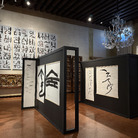 Dal 8 November 2025 al 11 January 2026
Venezia | Museo Correr
Dal 8 November 2025 al 11 January 2026
Venezia | Museo Correr
CARATTERI. Calligrafia e tipografia: Corea del Sud e Stati Uniti
-
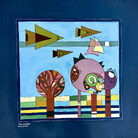 Dal 8 November 2025 al 22 February 2026
Brescia | Museo di Santa Giulia
Dal 8 November 2025 al 22 February 2026
Brescia | Museo di Santa Giulia
Material for an Exhibition. Storie, memorie e lotte dalla Palestina e dal Mediterraneo
-
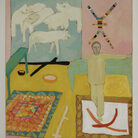 Dal 8 November 2025 al 18 January 2026
Perugia | Perugia, Spoleto e Gubbio
Dal 8 November 2025 al 18 January 2026
Perugia | Perugia, Spoleto e Gubbio
Mimmo Paladino. Antologica
-
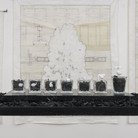 Dal 7 November 2025 al 25 January 2026
Roma | Museo Carlo Bilotti Aranciera di Villa Borghese
Dal 7 November 2025 al 25 January 2026
Roma | Museo Carlo Bilotti Aranciera di Villa Borghese
Silvia Scaringella. Deus sive natura
-
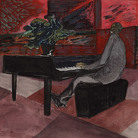 Dal 5 November 2025 al 1 March 2026
Asti | Palazzo Mazzetti
Dal 5 November 2025 al 1 March 2026
Asti | Palazzo Mazzetti
PAOLO CONTE. Original
-
 Dal 28 October 2025 al 15 February 2026
Brescia | Pinacoteca Tosio Martinengo
Dal 28 October 2025 al 15 February 2026
Brescia | Pinacoteca Tosio Martinengo
Peter Paul Rubens. Giovan Carlo Doria a cavallo
